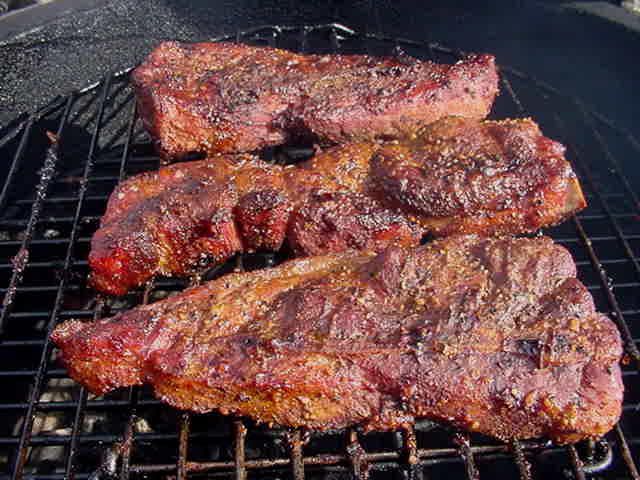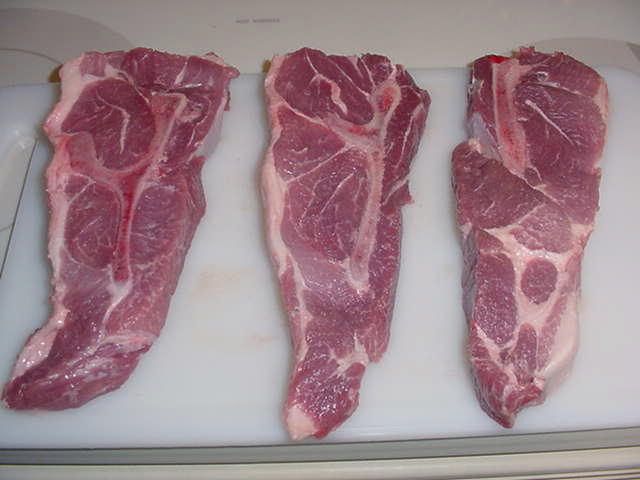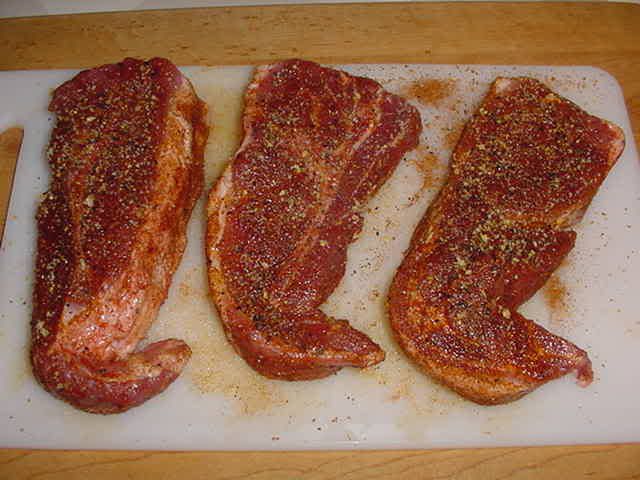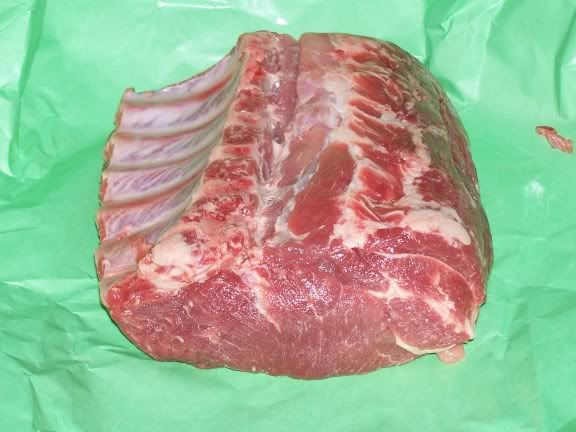
Country Style Ribs, depending on the butcher or the part of the country, are cut from two different parts of the pig.
The style shown first are cut from the blade end of the shoulder. The “shoulder cut” ribs usually have the bone left in and are well marbled with fat. Lower barbecue temperatures around 225° at the grate are beneficial to this cut due to the fat content. They can be cooked direct on a raised grate or indirect, the latter being my choice. Cook times of 3 to 5 hours will render the “shoulder cut” ribs into a moist and tender product. An internal temperature of 175° to 185° is ideal. Use a toothpick to monitor doneness. Fruit wood like cherry or apple can add extra flavor. Saucing toward the end of the cook is an option to explore since the meat is so much thicker than spare ribs.
Trim any excess fat around the outside edges.

Lightly oil or coat with mustard and apply rub an hour or two before cooking.

The second style comes from the blade end of a bone-in pork loin and generally include from three to six ribs. They look like thick pork chops. This tender, leaner cut is generally cooked direct using roasting temperatures. Use your favorite dry rub, seasonings and wood to compliment the flavor of the pork.
Guest Pit Boss fishlessman, a regular contributor on The Big Green Egg forum shared the following pictures as well as two options he favors when cooking these "loin ribs".

Here is a a bone-in pork loin. For roasting whole, fishlessman recommends searing the roast, resting, then cooking using roasting temperatures of 350° with a direct set-up on a raised grate. Removing the roast at an internal temperature of 145°, followed by a second rest will yield a moist finished product.

Fishlessman prefers to cut the roast into two-rib sections and use the same technique and finish temperature for the cook. The flavor of the rub will be more pronounced with the additional surface area.
No comments:
New comments are not allowed.